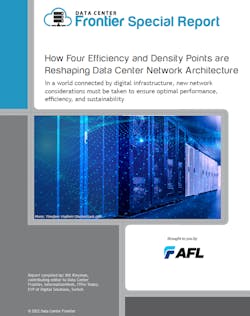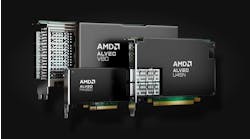Design Strategies to Support Digital Infrastructure
Last week we continued our article series on efficiency and density points that are reshaping data center network architecture. In this article, we'll explore design strategies to support digital infrastructure.
Let’s cut right to the critical point. A massive part of our digital modernization efforts revolves around our ability to connect. Further, this ability must be as efficient and low-latency as possible.
Looking back at our data center industry, we see that the most significant boom came from 1997-2000. Organizations require fast Internet connectivity, low latency, lots of computing power, and non-stop operation to deploy systems during that time. Remember, these solutions were critical as they were deployed to establish a presence on the Internet.
Since the dot-com bubble, data centers have grown in size and importance. They’ve also changed how they’re being designed and delivered for digital solutions, new workloads, and the cloud.
Growth around distributed computing, more require- ments around application resiliency, and ensuring optimal uptime have placed new stressors on data center and technology leaders. This is all a part of the greater digital transformation effort. A recent report indicated that Digital Transformation spending would grow to more than 53% of all information and communications technology (ICT) investment by 2023, up from 36% today. Funds continue to pour into Digital Transformation efforts as business leaders see the category as a long-term investment. As we look ahead, further spending will approach the $2 trillion mark by 2022. But where do data centers and our digital infrastructure fit in with all of this?
The latest Information Week’ State of Infrastructure’ report shows that 40% of respondents will spend their IT budgets on new technologies and innovation over the next 12 months. These organizations will actively look for ways to modernize their infrastructure to support digital initiatives and connect consumers. But there’s a real challenge behind that statement.
Not all connectivity is built the same
We often get so excited about our digital infrastructure efforts that we don’t always see potholes on the roads. Emerging challenges are complicating our deployment strategies.
Take a look at these key connectivity considerations:
- Keeping things modern and efficient. A challenge often seen within data centers is the approach to modernization as only a partial effort. Even if everything does not need to be updated, you still need to review each component in your data center. For example, are you leveraging the latest high-speed copper and fiber cabling that connects switches to servers within edge data center cabinets? Remember, these considerations help you create the right type of infrastructure balance and minimize network downtime and increase data center productivity. Keeping this modern and efficient also involves looking at processes and technology.
- Overcoming latency and connectivity issues. Latency, connectivity challenges, and flat-out outages are incredibly detrimental to business operations. To the network infrastructure professional, that means an ongoing effort to support exponentially increasing application speeds and bandwidth requirements with the capacity and flexibility to deliver critical network services to the enterprise efficiently. But even as network technologies advance at a breakneck pace, one thing remains constant: The LAN is the backbone of the enterprise, and the cabling infrastructure is the backbone of the LAN. There is a further focus on the LAN for the modern data center as systems become more converged and efficient. Further, LANs handle growing traffic from various solutions, including hyperconverged architecture, HPC, and more. Remember, not every cable is made the same, and not every networking solution can handle high-performance, high-density, and reliable communications. Working with network and connectivity leaders in the data center space requires good partners and the right solutions.
- Managing an overwhelming amount of complexity and fragmentation. The more connectivity we work with and users connecting to our infrastructure, the more complicated it can become. To reduce complexity, you need connectivity systems that are easier to deploy, support, and grow. Furthermore, a reduction in complex systems helps administrators isolate troubleshooting and reduce downtime for improved service levels.
Download the entire report, How Four Efficiency and Density Points are Reshaping Data Center Network Architecture, featuring AFL, to learn more. In our next article, we'll explore modern networks, cabling solutions, and how this impacts a digital infrastructure’s capability to improve its time-to-market.






